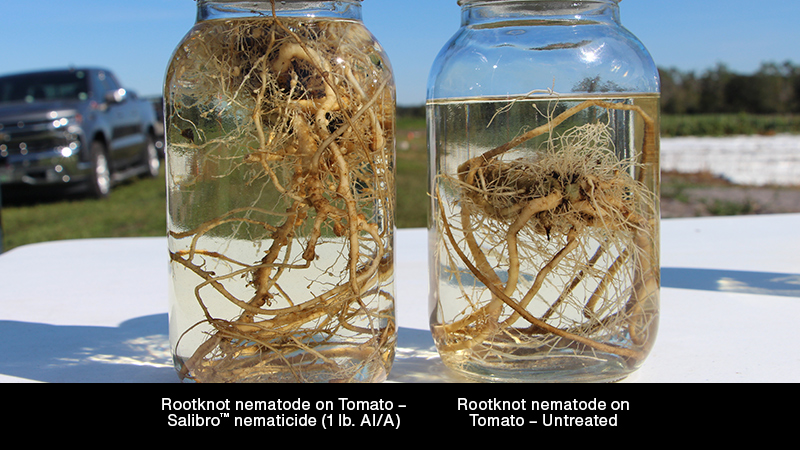Florida Strawberry Family Keeps Tradition Growing

Now, pickers use push carts for berry collection, pack in the field, and get up to $2.00 per flat. Drip irrigation has replaced overhead watering, and pine straw has been swapped for plastic. Better equipment and techniques have resulted in greater efficiency and higher yields for strawberry growers.
“Overhead sprinklers washed our chemicals away,” says Marty. “We had more disease factors and more weeds. With drip underneath the plastic, we’re more efficient and use fewer chemicals. And, we’re more profitable with these technologies because we’ve had better production.”
He estimates that yields have increased at least 50% with drip irrigation.
Farming: A Family Tradition
Buddy and Marty have spent their whole careers perfecting the process of growing strawberries, but they weren’t the first Sewells to break into the berry business. The family tradition dates back to the 1800s. Buddy’s grandfather, a telegraph communicator at the Valrico, FL, train depot, was the first in the family to farm. He bought 40 acres of land in the area for $2,500. Before his death, he had accumulated 82 acres, on which he grew oranges, vegetables, and strawberries with his son, G.C. Sewell Sr. In 1958, the father and son team of Sewell Sr. and Sewell Jr. (Buddy) formed G.C. Sewell & Son. In 1994, the name was changed to Sewell & Sewell Farms to reflect the new ownership of Buddy and Marty.
While some of the original Sewell land is still owned by Buddy and his siblings, most of it has been sold off. However, the Sewell family is still farming on approximately 80 acres in Hillsborough County. With 29 acres in Valrico and 50 acres in Sydney, the Sewells grow primarily Festival strawberries and some Winter Dawn. In the spring, they double-crop eggplant and hot peppers.
An integral part of the family business is Marty’s wife, Marie. Although the two are both from Hillsborough County, they first met at an FFA convention in Orlando when they were in high school. The Sewell sons, Marc and Marshal, have been actively involved in FFA as well. Marie handles payroll, bookkeeping, and managing the work crews. When he’s not in class at Hillsborough Community College, Marc assists with planting, irrigation, and other farm duties. Marshal, a senior in high school, has developed an affinity for the sales and marketing side of the business.
Marty oversees all aspects of farm management and focuses on the Sydney location. Buddy, who claims to be one of the oldest (age 72) berry farmers in the country, is still active in the business, driving tractors and helping out at the Valrico location.
“My banker asked if dad was going to quit or slow down this year,” says Marty. “When I asked him, he said, ‘Tell her when she reads my name on the back page of the obituaries, then I’ll retire.’ That’s what keeps him going, having something to do every day.”
“It’s been a great life for me,” says Buddy. “I really enjoy farming. I always have. I guess I’ll be part of it until I die.”
Pushing Past Roadblocks
The success of the family operation has not come without challenges. The two biggest obstacles currently facing the farm are labor and methyl bromide.
“The new social security no-match rule might be the final nail in the coffin if we don’t get the H-2A guest worker program or something that we can live with,” says Marty. “It’s a scary thought: putting in a crop knowing that they can come in and take your help away.”
As such, he is working toward taking the necessary steps to apply for H-2A. The priority is to get certified housing in place by modifying existing trailers to meet OSHA codes.
When asked about the future of the Florida strawberry industry, Buddy says, “It all depends on the labor situation: It’s going to make us or break us. If they take the labor away from us, we’re through that day. If they cut us off, agriculture — and a lot of other types of businesses — will shut down. It’s just that simple.”
Another major challenge is finding suitable methyl bromide alternatives in face of the chemical phase-out. In response, the farm has two test plots in place this season, one using Midas EC (iodomethane/Arysta LifeScience) and another using liquid Midas.
Increasing costs combined with static prices is another challenge.
“Every year, it costs more money,” says Buddy. “We buy everything retail and sell everything wholesale. I don’t how much longer we can go without getting an increase in the price of our produce. You have to plant more acres to make a living. We’re farming more strawberries now than ever before.”
Production Expansion
This season, Sewell & Sewell put another 15-acre block of strawberries into production, and it hopes to have another 10 to 15 acres up and running next year.
“We’re trying to get enough acreage in place so my son Marc can come into the business with us,” says Marty. “But first, he’ll get his college degree in business.”
“We hung around 6,000 acres of strawberries in Florida for a long time, and now we’re pushing 8,500 acres statewide,” says Marty, who is currently serving his second term on the Florida Strawberry Growers Association’s board of directors.
He says some growers in Hillsborough County are pushing up their diseased orange groves in favor of strawberry production to keep their greenbelt tax exemption. With increased acreage and Festival being a highly productive berry (2,000 to 3,000 flats per acre in a normal year), Marty says it’s getting tougher to compete. Competition from strawberry growers in Mexico and California adds to the challenge. But despite increasing competition, the Sewells are committed to continuing the family tradition of farming and want to see the fifth generation (Marc and Marshal) succeed in the berry business.









